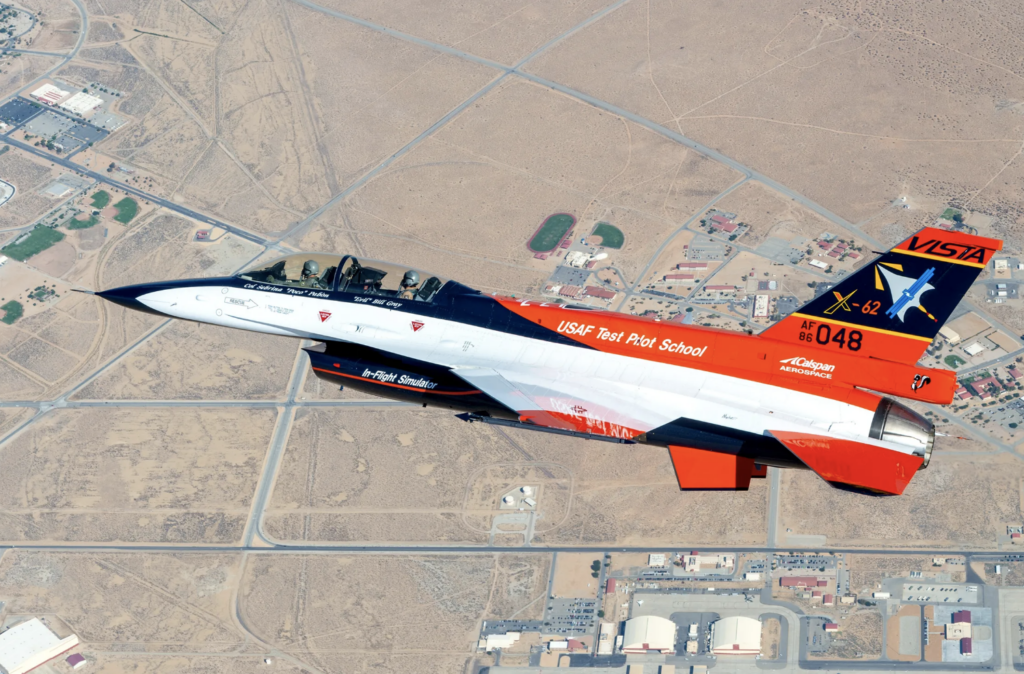USAF Plans Sensor Testing for Autonomous F-16s


The Air Force will put six autonomous F-16s in the air, equip them with rapidly upgradable software, execute test flights, and then have pilots fly the aircraft to monitor the functioning of the artificial intelligence (AI)-enabled autonomy. (Photo: Lockheed Martin)
The U.S. Air Force plans to integrate and test sensors, including advanced electronically scanned array radar, on autonomous F-16 fighters to feed the service’s Next Generation Air Dominance (NGAD) program.
The Air Force’s $2.3 billion fiscal 2024 request for NGAD includes $392 million associated with Collaborative Combat Aircraft (CCA)—figures that indicate that almost 17% of the NGAD fiscal 2024 request is for CCA (Defense Daily, March 14).
The Air Force’s March 13 fiscal 2024 budget overview lists a request of $522 million for CCA. Most of the remaining $130 million for CCA outside of NGAD looks to be for the service’s “autonomous collaborative platforms” (ACP) research and development effort, begun last year, which was a continuation of work under the Skyborg Vanguard program. ACP has focused on moving mature autonomous drones, including the Kratos XQ-58A Valkyrie, into the prototype phase.
The Air Force requested nearly $119 million for ACP in fiscal 2024, a $67 million increase from last year’s appropriated amount.
The nearly $119 million for ACP is entirely taken up by two proposed new start programs—nearly $69 million for an Experimental Operations Unit to reduce CCA program risk by exploring how CCAs could function most effectively with crewed aircraft in future Air Force squadrons; and nearly $50 million for the Viper Experimentation and Next-gen Operations Mode (VENOM).
Under VENOM, the Air Force is to put six autonomous F-16s in the air, equip them with rapidly upgradable software, execute test flights, and then have pilots fly the aircraft to monitor the functioning of the artificial intelligence (AI)-enabled autonomy.
Last month, Air Force Materiel Command said that the Air Force Research Laboratory (AFRL), the Air Force Test Center (AFTC), and the Defense Advanced Research Projects Agency (DARPA) held 12 AI-driven flight tests last December at Edwards AFB, Calif., of the X-62A Variable Stability In-Flight Simulator Test Aircraft (VISTA), a modified Block 30 F-16D in service since 1992 (Defense Daily, Feb. 14).
AFRL said that its Autonomous Air Combat Operations’ and DARPA’s Air Combat Evolution (ACE) AI algorithms permitted the X-62A to execute advanced fighter maneuvers in the tests last Dec. 1-16.
In a March 27 Mitchell Institute for Aerospace Studies’ virtual forum on NGAD, Air Force Maj. Gen. Evan “Weed” Dertien, the AFTC commander, said that VISTA has not had many sensors but that the VENOM F-16s will have an AESA radar and electronic warning.
“You have all those things where now you can expand your autonomy algorithm to react to the inputs that it’s getting to make decisions for yourself,” Dertien said. “It’s kind of the next evolution into scaling up what autonomy can do, and that’s what those VENOM aircraft will help us do.”
The post USAF Plans Sensor Testing for Autonomous F-16s appeared first on Avionics International.
—————
Boost Internet Speed–
Free Business Hosting–
Free Email Account–
Dropcatch–
Free Secure Email–
Secure Email–
Cheap VOIP Calls–
Free Hosting–
Boost Inflight Wifi–
Premium Domains–
Free Domains





